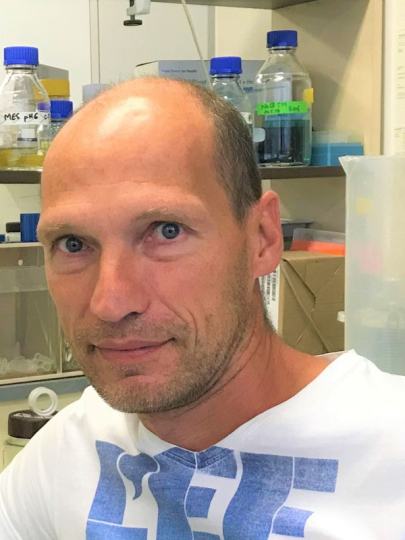Benoît GamainInstitut national de la transfusion sanguine (INTS) Inserm / Université de Paris
Mes recherches
Following the completion of my PhD (1994-1997) on the plasmodium falciparum thioredoxin peroxidase, I joined in 1998, Dr Louis Miller laboratory at the National Institute of Health (Bethesda, USA) to study the adhesion properties of members of the variant antigen PfEMP1 family and evaluate them as vaccine candidate (1998-2003). In 2003, I integrated the CNRS as a CR1, and moved to the Pasteur Institute. My research activities focused on the identification of the interactions involved during pregnancy associated malaria (PAM) in order to identify the optimal antigens that should be included in a multi-component vaccine that will prevent malaria during pregnancy and improve pregnancy outcomes. In 2008, I was awarded the CNRS bronze medal and obtained an ATIP-AVENIR in 2009. I then moved from the URA2581 on October 1st 2010 to create my ATIP-Avenir team at the National Institute of Blood Transfusion in Paris. Since then, I’m following-up my work on the identification and the deciphering of the molecular interactions involved in the cytoadhesion of PEs in the placenta but also on the identification of the host post-adhesive events. My HCERES labelled team within the INSERM / Paris University UMR_S1134 as made significant progress in the understanding of the molecular mechanisms associated to malaria pathogenicity and have progress towards the development of a placental malaria vaccine tested in a Phase Ia/Ib clinical trial in France and Burkina Faso.
Mon projet ATIP-Avenir
Molecular mechanisms of placental malaria pathogenesis: from cytoadhesion to host response
Adhesion of Plasmodium falciparum-infected erythrocytes (PEs) to placental chondroitin-4-sulfate (CSA) has been linked to the severe disease outcome of pregnancy-associated malaria (PAM). After multiple pregnancies, women acquire protective antibodies that block CSA-binding and cross-react with geographically diverse placental isolates suggesting that surface molecule(s) expressed by PAM-infected erythrocytes have conserved epitopes and that a PAM vaccine may be possible. Recent evidence strongly suggests that var2CSA, a member of the PfEMP1 family, may have an important role in PAM and immunity. Although var2CSA is the main candidate for a pregnancy malaria vaccine, experimental evidence suggests that antigenic polymorphism, the lack of structural informations and gaps in our understanding of placental immunopathology may pose a challenge for vaccine and therapeutic development.
Our project would have as main objectives the identification and the deciphering of the molecular interactions involved in the cytoadhesion of PEs in the placenta and the identification of the host post-adhesive events. This project will definitively be a crucial step towards the design of novel vaccine and therapeutic strategies to provide protection against PAM.
